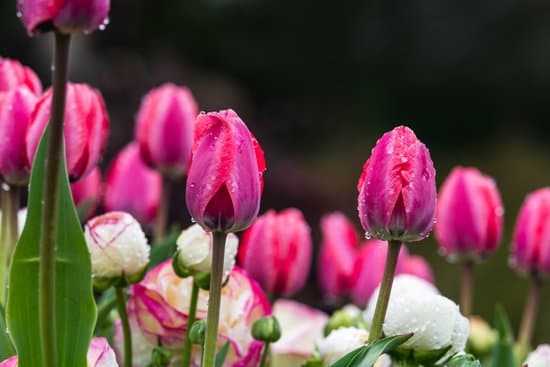Shade gardens possess a unique charm and tranquility that can transform any outdoor space into a serene oasis. When it comes to seeking shade ideas and inspiration for shady gardens, Keith Wiley’s expertise shines through. As a renowned horticulturist and garden designer, his knowledge in creating stunning shady landscapes is unmatched.
The benefits of having a shady garden are plentiful. Not only do they require lower maintenance compared to sun-drenched gardens, but they also offer cooler temperatures during hot summer days. Additionally, the variety of plants that thrive in shaded areas allows for endless possibilities in terms of design and creativity, making shady gardens a haven for unique botanical displays.
Designing with shade opens up a world of possibilities for creating visually appealing outdoor spaces. By incorporating different textures, colors, and plant varieties, shady gardens can truly come to life with depth and interest. Keith Wiley’s expertise in this field offers valuable insights into how to make the most out of shaded areas, turning them into captivating retreats that beckon both relaxation and admiration.
Benefits of Shady Gardens
Shade gardens offer a unique and refreshing retreat from the harsh sun, providing a cool and tranquil environment to relax and unwind. One renowned expert in creating stunning shady gardens is Keith Wiley, whose expertise in horticulture and garden design has inspired many to transform their outdoor spaces into beautiful oases of shade. With his keen eye for plant selection and innovative design strategies, Keith Wiley showcases the immense benefits of incorporating shade into your garden.
One of the primary advantages of having a shady garden is the lower maintenance required compared to sun-drenched landscapes. Shade-loving plants typically require less water and are more resilient to fluctuations in temperature, making them easier to care for in the long run. Additionally, the cooler temperatures in shady areas create a comfortable outdoor living space where you can escape the heat during hot summer days.
Shady gardens also offer a wide array of unique plant options that thrive in low light conditions. From delicate ferns to lush hostas and vibrant native woodland plants, there is no shortage of choices when it comes to designing a diverse and visually appealing shade garden.
By incorporating different textures, colors, and foliage shapes, you can create an interesting and dynamic landscape that transforms with the changing seasons. Explore some shade ideas and inspiration for shady gardens Keith Wiley style by incorporating his expert tips into your own garden design.
- Consider planting a mix of evergreen shrubs like Rhododendrons or Camellias for year-round interest
- Add pops of color with shade-loving flowers such as Bleeding Hearts or Astilbes
- Incorporate groundcovers like Japanese Forest Grass or Heucheras for added texture
By capitalizing on the benefits of shady gardens and embracing Keith Wiley’s expertise, you can create a stunning outdoor space that is both visually captivating and low-maintenance. Experiment with different plant combinations, textures, and structures to transform your shaded garden into a peaceful sanctuary that reflects your personal style and love for nature.
Designing With Shade
Designing a stunning shady garden involves careful consideration of various design elements to create a captivating and visually appealing outdoor space. Keith Wiley, renowned for his expertise in gardening, offers valuable insights into designing with shade to transform your garden into a lush oasis. By exploring different textures, colors, and plant types, you can create interest and enhance the beauty of your shady garden.
To achieve a well-balanced design in a shady garden, consider incorporating a mix of plant varieties with varying leaf shapes and sizes. This diversity adds visual appeal and creates depth in the garden landscape. Utilize plants with bold textures like ferns or heucheras to add dimension and contrast to the shaded areas. Combining different shades of green, such as mossy greens and variegated foliage, can also provide an interesting color palette while maintaining a cohesive look in your garden.
In addition to plant selection, incorporating hardscape elements like rocks, pebbles, or driftwood can complement the lush vegetation in shady gardens. Create winding pathways or secluded sitting areas using these materials to add structure and visual interest to the space.
Consider adding focal points like ornamental statues or birdbaths strategically placed among the plants to draw the eye and create points of interest throughout the garden. With Keith Wiley’s expertise and creative vision, designing with shade becomes an enjoyable process that results in a beautiful and harmonious shady garden.
- Utilize plants with varying leaf shapes and sizes for visual appeal
- Combine different textures like ferns or heucheras for depth
- Incorporate hardscape elements like rocks or driftwood for added interest
- Create focal points with ornamental statues or birdbaths for visual impact
Plant Selection for Shade
When it comes to creating a beautiful shady garden, selecting the right plants is key to bringing life and color into those darker areas of your outdoor space. Keith Wiley, a renowned expert in landscaping and gardening, emphasizes the importance of choosing plant varieties that thrive in shady conditions. By incorporating a mix of ferns, hostas, and native woodland plants, you can create a lush and vibrant oasis even in the shade.
Ferns: Adding Texture and Greenery
Ferns are a popular choice for shady gardens due to their ability to thrive in low-light environments. These versatile plants come in a variety of sizes and shapes, making them ideal for adding texture and greenery to your garden beds or borders. From delicate maidenhair ferns to bold sword ferns, there are plenty of options to choose from when incorporating ferns into your shady garden design.
Hostas: Varied Colors and Patterns
Hostas are another favorite for shade gardens, known for their striking foliage colors and patterns. These hardy perennials come in shades of green, blue, gold, and variegated combinations, offering a diverse palette for adding interest to your shady landscape. Hostas also require minimal maintenance once established, making them an easy choice for busy gardeners looking to add beauty to their shaded outdoor spaces.
Native Woodland Plants: Thriving in Natural Settings
Native woodland plants are well-adapted to growing under the canopy of trees or in shaded areas, making them excellent choices for creating an authentic naturalistic look in your garden. Species like trilliums, wild ginger, and bleeding hearts not only add seasonal interest with their blooms but also provide important habitat for local wildlife. By incorporating these native plants into your shady garden design, you can create a sustainable ecosystem while enhancing the beauty of your outdoor space.
Creative Shade Structures
When it comes to creating a beautiful and functional shady garden, incorporating creative shade structures can truly enhance the overall aesthetic appeal. Keith Wiley, an expert in gardening and landscaping, recommends utilizing innovative designs such as pergolas, arbors, and umbrellas to not only provide relief from the sun but also add an element of style to your outdoor space.
Pergolas
Pergolas are excellent additions to shady gardens as they offer partial shade while also providing a structure for climbing plants such as vines or roses. These open frameworks can define different areas within your garden, creating cozy nooks for relaxation or dining. Keith Wiley suggests designing pergolas with natural materials like wood or stone to complement the surrounding landscape.
Arbors
Arbors are another fantastic option for adding visual interest and shade to your garden. These archways can serve as entrances to different sections of your outdoor space or act as focal points for climbing plants. Keith Wiley recommends selecting arbor designs that align with the overall theme of your garden, whether traditional, modern, or rustic, to create a cohesive look.
Umbrellas
For a more portable shade solution in your garden, umbrellas are versatile options that can be moved around depending on the sun’s position. These structures come in various sizes, colors, and styles to suit different preferences and garden layouts. Keith Wiley advises choosing umbrellas with UV protection fabric to ensure longevity and sun safety for both you and your plants.
By incorporating these creative shade structures into your shady garden design following Keith Wiley’s recommendations, you can not only create a comfortable outdoor environment but also elevate the beauty of your space with innovative touches. Whether it’s a pergola defining a seating area, an arbor leading to a secret garden nook or colorful umbrellas scattered throughout – these structures will surely make your shaded garden a true oasis of relaxation and charm.
Lighting Options for Shady Gardens
As shady gardens often lack natural sunlight, the right lighting can play a crucial role in enhancing their beauty, creating ambience, and allowing you to enjoy your outdoor space even after sunset. When it comes to lighting options for shady gardens, there are several creative choices that can illuminate the space effectively.
One popular option is fairy lights, which can be wrapped around trees or draped along fences to add a magical touch to the garden. These delicate lights come in various colors and styles, allowing you to customize the ambiance to suit your taste.
Another excellent lighting choice for shady gardens is lanterns. Lanterns not only provide functional illumination but also serve as decorative elements that can complement the overall design of your garden. Whether hung from branches or placed on tables, lanterns create a warm and inviting atmosphere that is perfect for evening gatherings or quiet moments of relaxation in the garden.
Additionally, solar-powered fixtures offer an eco-friendly lighting solution for shady areas. These fixtures harness energy from the sun during the day and automatically illuminate your garden at night, providing an energy-efficient way to light up your outdoor space.
Incorporating a combination of different lighting options such as fairy lights, lanterns, and solar-powered fixtures can transform your shady garden into a captivating sanctuary that can be enjoyed both during the day and in the evening. By strategically placing lights along pathways, near seating areas, or highlighting unique features of your garden like fountains or plant displays, you can create a dynamic and inviting outdoor space.
Experimenting with various lighting arrangements will not only brighten up your shady garden but also add depth and dimension to its design.
| Lighting Option | Description |
|---|---|
| Fairy Lights | Delicate lights that add a magical touch when wrapped around trees or fences. |
| Lanterns | Provide functional illumination while serving as decorative elements that enhance the garden’s design. |
| Solar-Powered Fixtures | An eco-friendly lighting solution that automatically illuminates the garden at night using solar energy. |
Maintenance Tips for Shady Gardens
Maintaining a shady garden requires some specific care to ensure the plants thrive in their environment. One essential aspect to consider is the watering schedule for the plants in shady areas. Since sunlight is limited, moisture retention may be higher in these spaces.
It is crucial to monitor the soil moisture levels regularly and water accordingly. However, it is also important to avoid overwatering, as this can lead to root rot and other issues. A good practice is to use mulch around plants to help retain moisture and regulate soil temperature.
Pruning techniques are another key element in maintaining a healthy shady garden. Regular pruning helps control the growth of plants, promotes airflow, and discourages pests and diseases. When pruning in shady areas, it’s essential to be mindful of the amount of light reaching the plants as excessive pruning can leave them vulnerable. Focus on removing dead or damaged branches, encouraging new growth, and shaping the plants for a visually appealing garden space.
In addition to watering schedules and pruning techniques, soil amendments play a vital role in caring for plants in shady gardens. Shade-loving plants have specific nutrient requirements that differ from sun-loving counterparts. Adding organic matter like compost or well-aged manure can improve soil structure, drainage, and fertility.
Conducting soil tests periodically can help determine any deficiencies that need addressing through targeted fertilization. By creating a healthy soil environment, you provide the necessary foundation for your shady garden plants to flourish under Keith Wiley’s expert shade ideas and inspiration.
Keith Wiley’s Top Shade Garden Tips
Creating and maintaining a stunning shady garden requires careful planning and knowledge of the unique needs of plants that thrive in shaded conditions. Keith Wiley, a renowned expert in gardening, provides invaluable tips and tricks to help you achieve success in your shady garden endeavors. With his years of experience and expertise, Keith Wiley emphasizes the importance of understanding the specific requirements of shade-loving plants to create a flourishing garden oasis.
One key tip from Keith Wiley is to carefully select plants that are well-suited for shady areas. By choosing species like ferns, hostas, and native woodland plants, you can ensure that your shady garden remains vibrant and healthy. Additionally, Keith suggests incorporating a variety of textures, colors, and plant types to create visual interest in your garden design. By mixing different foliage shapes and sizes, you can add depth and dimension to your shaded landscape.
In addition to plant selection, Keith Wiley also advises on the importance of proper maintenance for shady gardens. From establishing appropriate watering schedules to implementing effective pruning techniques, caring for your shade-loving plants is crucial for their overall health and longevity.
By following Keith’s expert recommendations on soil amendments and nutrient management, you can ensure that your shady garden continues to thrive throughout the seasons. Ultimately, with Keith Wiley’s top shade garden tips in mind, you can confidently create a beautiful oasis in even the shadiest corners of your outdoor space.

Welcome to my gardening blog! I am passionate about plants and enjoy sharing my knowledge and experiences with others. In this blog, I will write about everything related to gardening, from tips on how to get started to updates on my own garden projects.





